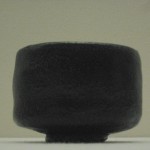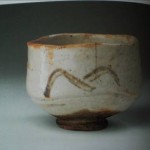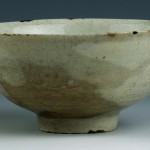
黒樂茶碗、銘老松

絵志野茶碗

Schale, Herkunft: Korea
oh, dear. i hate getting up at 6am… so i got up at 7am, decided to skip again and work at home. -.-
anyways. i wanted to post here since i held my presentation. my professor wasn’t so satisfied i think. she yelled, „japanese labelling of korea tea bowls has to stop!“ and then she said very quickly some korean words for labelling bowls that i could not quite made out. i will go to her today to ask again.
also, i think my main failure was that i was researching for „茶碗“ (japanese) instead of „bowls“ (korean word).
i read already that the bowls were peasant, common bowls (which isn’t an insult or something romantic… just the fact, used for tea, rice, soup, cidre…) and that the japanese used them ONLY for tea.
so, my second failure based on this wrong research was to present no buncheong wares, but wares from japanese museums only. of course, i could not find any „teabowls“ in the korean museums. i should have searched for „bowl“+“16c“+“korea“+ maybe buncheong, but im not sure if it is buncheong (but, then, what could it be else? it has some semi-seladonish glaze, but it’s definately not seladon…)
aya… i feel like a freshmen again…
So, I found some really interesting pieces in the Freer&Sackler… Like this one…
I am still not satisfied with my yondering and pondering about the plain copying of Japanese made up „identities“ for pots… (As in Cort 1992, Chanoyu 71)
What made so many people drive to consider these labels as superior?
Why do we have a huge interest in Japan and Japaneseness but not in other asian countries? Is there some „Koreanxiety“? Why is access to specified literature so limited here?
I saw a really good bibliography of the University of Hawai’i (by Kenneth Robinson), but most of the mentioned are not to be read in Germany. A shame…
I look forward to my pilgrimage in February… as Marichi called it…
Chemistry Corner
General Overview
Useful Database
John Baymore’s Thoughts